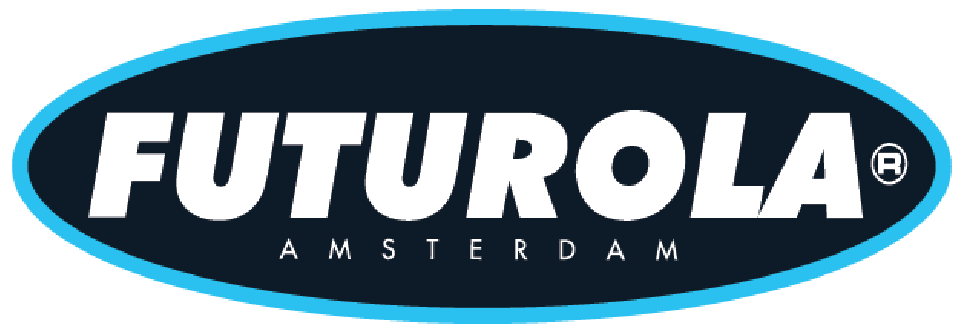Hand-rolling produces inconsistent results and requires 5-10 minutes per cone. Cone rolling tools deliver 95% consistency and reduce rolling time to 30-60 seconds while providing standardized density control that manual techniques cannot match.
This comprehensive guide covers essential cone rolling tools, proven techniques for maximum efficiency, and maintenance practices that ensure long-term performance. Whether you're scaling up production or seeking better results, mastering these tools and methods will transform your rolling experience.
Understanding Cone Rolling Tool Categories
Modern cone rolling tools can be categorized into several key groups, each designed to address specific challenges in the rolling process. Understanding these tool types helps you make informed decisions about which equipment best suits your needs and volume requirements.
Manual vs. Automated Systems
Manual Systems provide hands-on control while delivering consistent results. These devices guide the rolling process while allowing users to input pressure and timing. They're ideal for small to medium operations where flexibility and cost-effectiveness are priorities.
Automated Systems take efficiency further by handling multiple cones simultaneously with minimal user intervention. These machines excel in commercial settings where consistency and high-volume output are paramount, though they require larger upfront investments.
Hybrid Approaches combine manual control with automated assistance, offering a middle ground for operations that need higher throughput than manual methods but more flexibility than fully automated systems.
How Do Manual Cone Rollers Work?
Manual cone rollers form the foundation of efficient small-scale production, offering precise control over the rolling process while delivering consistent results. These tools require proper setup and mastery of technique, but they provide excellent value for operations that prioritize flexibility and hands-on control.
Basic Manual Roller Setup and Operation
Manual cone rollers form the foundation of efficient small-scale production. Proper setup requires attention to detail and understanding of the mechanical principles involved.
Initial Setup Process: Begin by ensuring your roller is completely clean and properly aligned. Check that the rolling apron moves smoothly without binding or twisting, and verify that all components sit flush and stable. Any misalignment will result in direct inconsistencies in your finished cones.
Position the cone paper with the tip pointing toward the designated groove, ensuring it sits snugly without creases or wrinkles. The paper should align perfectly with the roller's guides, creating a straight foundation for consistent results. Take time to verify this alignment - it's the foundation of everything that follows.
Loading Technique: Loading requires an even distribution of material from the filter end to the opening. Add material progressively in small amounts rather than dumping everything at once. This approach prevents jamming and ensures uniform density throughout the cone's length.
Start with approximately 0.1-0.2 gram increments, distributing each addition evenly across the paper's width. Gentle tapping helps settle the material and eliminates air pockets that can cause inconsistent performance or structural weak points.
Rolling Process: Apply a steady pressure of 2-4 pounds force while rotating the mechanism at 1-2 rotations per second. This creates optimal cone formation without paper tearing or material over-compression. The goal is consistent compression that compacts material without crushing delicate structures or generating excessive force that tears rolling papers.
Experienced users develop an intuitive feel for optimal pressure through practice. Start with lighter pressure and gradually increase until you achieve the desired tightness while maintaining proper airflow characteristics.
Quality Assessment: Quality indicators include smooth operation without resistance, even material distribution visible through the paper, and proper cone shape formation. If the roller binds or the cone appears uneven, stop immediately and redistribute the material before continuing.
Advanced Manual Techniques
Pressure Variation Methods: Different materials respond better to varying pressure applications. Dense materials may require a higher initial pressure, followed by a lighter finishing pressure, while lighter materials benefit from consistent, moderate pressure throughout the process.
Multi-Stage Rolling: For premium results, consider a two-stage rolling process. Initial rolling at lighter pressure creates the basic shape, followed by a second pass at higher pressure for final compaction. This technique produces exceptionally consistent results but requires additional time investment.
Are Automated Cone Rolling Machines Worth the Investment?
Automated cone rolling systems represent the pinnacle of production efficiency, handling large volumes with minimal operator intervention. These sophisticated machines integrate multiple production steps into streamlined workflows, making them essential for commercial operations requiring high throughput and consistent quality. Comparing manual and automated cone rolling options helps you choose equipment that matches your production needs and budget requirements.
Commercial-Grade Equipment
Automated cone rolling systems handle 50-500 cones simultaneously, producing 500-10,000 cones per 8-hour session with superior consistency. These machines excel in commercial settings where precision and output volume justify the investment.
System Capabilities: Modern automated systems feature programmable settings for different cone sizes, material types, and density preferences. Setup involves calibrating the machine for your specific requirements, including cone paper specifications and desired fill weights.
Capacity Classifications:
- 50-cone models: Designed for small commercial operations producing 500-1,000 cones daily. These systems offer automation benefits while maintaining manageable equipment size and investment requirements.
- 100-cone systems: Medium-capacity operations producing 2,000-5,000 cones daily benefit from these systems' balance of throughput and flexibility.
- 500-cone systems: High-volume commercial production exceeding 10,000 cones per 8-hour session requires these sophisticated machines with integrated material handling and quality control systems.
Integration and Workflow: These machines integrate material loading, rolling, and finishing into streamlined workflows. Proper integration requires careful planning of material preparation, loading sequences, and quality control checkpoints to ensure seamless operation.
Investment Analysis: Investment considerations include production volume requirements, space constraints, and return on investment calculations. Automated systems typically pay for themselves through increased efficiency and reduced labor costs; however, the payback period varies significantly depending on production volumes and labor costs.
Calculate potential savings by comparing current labor costs for manual production against equipment payments and reduced labor requirements. Most commercial operations see 6-18 month payback periods when properly matched to production volumes.
What Additional Tools Do You Need for Cone Rolling?
Supporting tools enhance the accuracy and efficiency of cone rolling operations by addressing specific challenges in material handling, distribution, and quality control. These specialized devices work in conjunction with primary rolling equipment to optimize every aspect of the production process.
Cone Fillers and Loading Equipment
Cone fillers reduce loading time by 70-80% while ensuring even material distribution throughout the cone's length. These tools come in various designs, from simple funnels to sophisticated vibrating systems that optimize material settlement.
Filler Types and Applications: Wide-bore fillers work effectively with coarser grinds, providing rapid material flow while maintaining control over the process. Narrow designs offer superior control for finer materials but require more careful technique to prevent jamming.
Loading Techniques: Position the filler flush against the cone opening and add material in controlled increments. The optimal technique involves adding 0.1-0.2 grams with gentle settling between each increment to achieve a consistent total fill weight of 0.5-1.5 grams.
Advanced loading systems incorporate vibration or gentle agitation to improve material settlement. These features reduce manual tamping requirements while achieving better density consistency across multiple cones.
Material Flow Optimization: Different materials require adjusted techniques. High-resin content materials may adhere to filler walls, necessitating periodic cleaning and potentially necessitating the use of different filler materials. Static buildup can be managed through the use of grounding techniques and humidity control.
Packing and Tamping Equipment
Effective packing tools achieve an optimal density of 0.4-0.6 g/cm³ while maintaining 15-25% airflow resistance for proper draw characteristics. These implements range from simple tamping sticks to sophisticated tools with pressure indicators and ergonomic designs.
Three-Stage Tamping Process: Optimal tamping technique applies graduated pressure in three distinct stages:
- Initial settling (1 lb pressure): Gently settle material without compression to eliminate air pockets and establish even distribution
- Intermediate compression (2 lbs pressure): Begin material compaction while maintaining structural integrity
- Final packing (3 lbs pressure): Achieve target density without over-compression that restricts airflow
Tool Selection Criteria: The selection of tools depends on the cone size and material characteristics. Larger cones require tools with broader tamping surfaces to distribute pressure evenly, while smaller cones need precision implements that fit without damaging the paper structure.
Consider ergonomic factors for high-volume operations. Tools with comfortable grips and appropriate weight distribution reduce operator fatigue and maintain consistency throughout extended production sessions.
Quality Control and Measurement Tools
Precision measuring tools ensure consistency across batches, helping to maintain quality standards. Digital scales with 0.1-gram precision allow accurate measurement of fill weights, enabling reproducible results across large batches.
Weight Verification Systems: Weight consistency has a direct impact on performance characteristics and user experience. Establish target weights for different cone sizes and implement verification procedures that detect variations before they impact large batches.
Density Measurement: Advanced density measurement tools help verify optimal packing throughout the cone's length. Some sophisticated tools use ultrasonic technology to detect variations without disassembling cones, enabling non-destructive quality control.
Draw-Resistance Testing: Quality testing procedures include draw-resistance checks that verify proper airflow characteristics. Simple testing devices can quantify resistance levels, ensuring finished cones meet established standards for user experience.
Essential Techniques and Best Practices
Mastering efficient techniques maximizes tool performance, minimizes processing time, and ensures consistent quality outcomes. These proven methods focus on workflow optimization, precision execution, and systematic approaches that eliminate common sources of variation. Exploring how cone rollers simplify the packing process reveals key strategies for achieving consistent results with minimal effort.
Material Preparation Standards
Optimal material preparation forms the foundation of successful cone rolling across all tool types. Proper preparation ensures predictable tool performance and consistent quality in the finished product.
Grind Optimization: Cone rolling tools perform optimally with medium-fine grinds, specifically those with a particle size of 1-3mm. This size range offers excellent flow characteristics while maintaining structural integrity, ensuring even distribution through tools.
Consistent particle size ensures predictable flow through equipment and uniform density in finished cones. High-quality grinding equipment produces more consistent results than traditional methods, directly improving tool performance.
Moisture Content Management: The optimal material moisture content for cone rolling tools ranges from 10% to 15%. Below 8% creates excessive dust and harsh product characteristics, while above 18% causes equipment clogging and uneven performance patterns.
Monitor moisture content using digital meters designed for this purpose. Environmental factors like humidity affect moisture levels, requiring adjustments to storage and handling procedures.
Storage and Conditioning: Proper storage maintains optimal moisture levels and prevents contamination. Use sealed containers in controlled environments to preserve material characteristics between preparation and use.
Environmental factors, including humidity and static buildup, can impact material flow characteristics. Consider these factors when preparing material for different tool types and production volumes.
Loading and Distribution Mastery
Even loading maintains a ±0.05 gram weight variation and a uniform density of 0.4-0.6 g/cm³ throughout the cone length. This precision requires a systematic approach and attention to detail.
Systematic Loading Process: Begin by establishing consistent material quantities for each cone using precision measuring tools. This foundation ensures reproducibility across batches and enables quality control tracking.
Effective distribution requires gradual loading in small increments with settling between additions. This approach prevents jamming and achieves consistent density patterns throughout the cone's length.
Density Management Techniques: Different materials exhibit varying behaviors under compression. Some materials compress significantly, requiring adjustments to initial loading quantities to achieve the desired final density. Develop material-specific loading charts through testing and refinement to ensure optimal performance.
Tool-specific approaches optimize each device's capabilities. Manual rollers benefit from careful pressure control and timing, while automated systems rely on precise calibration and consistent material preparation.
Troubleshooting Distribution Issues: Common distribution problems often stem from material inconsistency, tool wear, or variations in technique. Systematic diagnosis prevents recurring problems and maintains production efficiency.
Document solutions to common issues for training purposes and continuous improvement. This knowledge base becomes invaluable for training new operators and maintaining consistency across personnel changes.
How to Maintain Cone Rolling Tools and Fix Common Problems
Proper maintenance extends tool life while ensuring consistent performance, making it essential for maximizing equipment investment and preventing costly production delays. Systematic maintenance approaches combined with effective troubleshooting procedures keep operations running smoothly and maintain quality standards.
Daily Maintenance Protocols
Proper cleaning and maintenance of cone rollers requires attention to all tool surfaces that contact material, including hard-to-reach areas where residue commonly accumulates. Use appropriate cleaning tools that won't damage delicate components. Daily cleaning with 70% isopropyl alcohol removes material residue and prevents buildup that reduces tool performance over time.
Cleaning Procedures: Focus attention on all tool surfaces that come into contact with material, including hard-to-reach areas where residue commonly accumulates. Use cleaning tools that are suitable for delicate components and won't leave residue that affects future performance.
Component Inspection: Daily component inspection identifies wear patterns after 500-1,000 uses, preventing potential failures that could cause production downtime. Look for signs of excessive wear, misalignment, or damage that could affect performance quality.
Lubrication Management: Proper lubrication schedules ensure the smooth operation of moving parts and prevent premature wear and tear. Use only manufacturer-recommended lubricants in specified quantities to avoid contamination issues that could affect product quality.
Long-term Care and Component Management
Replacement Scheduling: Wear indicators help determine the optimal timing for component replacement, rather than continuing use until the component fails. Common indicators include increased operating force, reduced precision, or visible component damage.
Replacement schedules based on usage hours or production volumes prevent unexpected failures during critical operations. Maintaining spare parts inventory ensures minimal downtime when replacements become necessary.
Professional Servicing: Complex repairs or calibration adjustments may require professional attention beyond user capabilities. Establishing relationships with qualified service providers ensures prompt attention when specialized maintenance becomes necessary.
Common Issues and Solutions
Uneven Filling Problems: Uneven filling occurs in 15-20% of cones due to three leading causes:
- Inconsistent particle size (40% of cases)
- Improper tool calibration (35%) and technique variations (25%).
- Systematic diagnosis addresses root causes rather than symptoms.
Equipment Jamming: Tool jamming occurs when fill weights exceed optimal ranges by 20-30%, material moisture exceeds recommended levels, or components show excessive wear. Clear jams carefully to avoid damage, then address underlying causes to prevent recurrence.
Quality Inconsistencies: Inconsistent cone quality often indicates variations in material preparation, tool calibration, or operator technique. Standardizing procedures and implementing quality checks helps maintain consistency across batches and operators.
Investment Strategy and ROI Analysis
Smart investment decisions require careful analysis of production needs, growth projections, and financial capabilities to ensure optimal tool selection. Understanding the relationship between tool capabilities and operational requirements enables strategic equipment acquisition that supports both current needs and future expansion.
Needs Assessment Framework
Tool selection requires careful assessment of three critical factors: daily production volume requirements, quality consistency standards, and budget constraints. Proper assessment prevents over-investment in unnecessary capabilities or under-investment that limits production potential.
Production Volume Analysis: Honestly evaluate current and projected production volumes. Small operations (50-500 cones daily) benefit from different tool selections than medium operations (500-5,000 daily) or large commercial operations (5,000+ daily).
Quality Requirements: Determine acceptable levels of quality variation. Some applications require extremely tight tolerances, while others allow broader ranges. This assessment directly impacts tool selection and investment requirements.
Growth Planning: Consider projected growth over 2-3 years when making investment decisions. Tools that seem adequate for current volumes may become limiting factors as operations expand.
Return on Investment Calculations
Time Savings Analysis: Calculate the current labor costs for manual production and compare them against the tool-assisted production times. Most operations achieve 40-60% time reductions, resulting in direct labor cost savings or increased production capacity.
Quality Improvement Benefits: Improved consistency reduces waste rates and customer returns. Calculate the value of reduced waste and improved customer satisfaction when evaluating tool investments.
Progressive Investment Strategy: Start with essential tools that provide immediate benefits, then add advanced equipment as experience and production volumes justify expansion. This approach minimizes risk while systematically building capabilities.
Mastering Cone Rolling Excellence
Cone rolling tools deliver measurable improvements, including 95% consistency compared to 60-70% manual results, an 80-90% time reduction, and precision density control that manual methods cannot achieve. Success requires proper tool selection tailored to production needs, mastery of technique through practice and training, and consistent maintenance that preserves performance over time.
Quality cone rolling tools provide quantifiable returns through efficiency improvements, waste reduction, and consistency rates that meet commercial production standards. Regular maintenance and continuous skill development ensure that these benefits persist throughout the tool's life cycle.
Begin by honestly assessing your current production needs and quality requirements, then select appropriate tools and implement the techniques outlined in this guide. At Futurola, we provide the precision equipment and expertise needed to achieve professional-grade results while maximizing efficiency and maintaining consistent quality standards that satisfy even the most demanding applications.





LEAVE A COMMENT
All comments are moderated before being published.
This site is protected by hCaptcha and the hCaptcha Privacy Policy and Terms of Service apply.